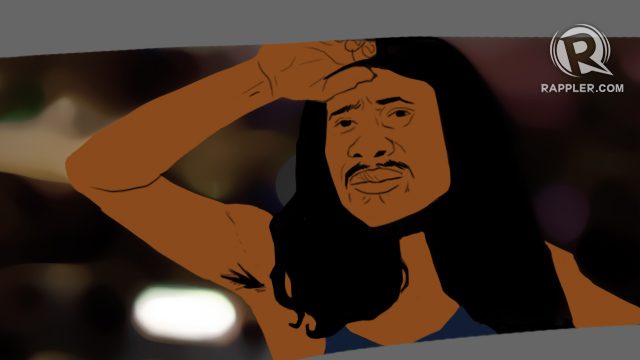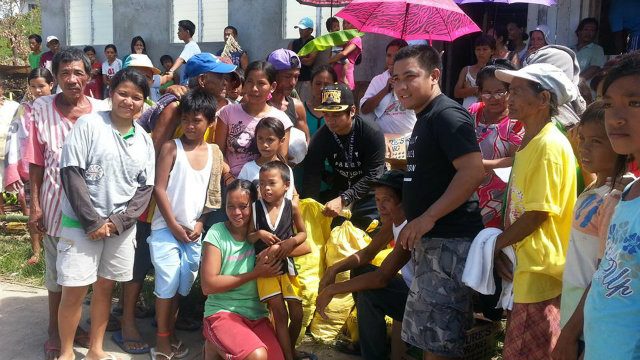SUMMARY
This is AI generated summarization, which may have errors. For context, always refer to the full article.

CEBU, Philippines – Ben lived in a cage – a structure not smaller than a dog house and not big enough to be able to stand straight.
Afraid his mental disability could make him violent even when slightly provoked, his family shackled him inside the wooden shelter almost 16 years ago. It is where he sleeps, eats, and defecates.
“They wanted to help him. But for families of the mentally disabled, caging people like him is the best intervention. Wala naman kasing existing programs on mental health or mental awareness (There are no existing programs on mental health or mental awareness),” JP Maunes, head of the disability rights organization Gualandi Volunteer Service Programme (GVSP), said.
He never left the cage – not even when Super Typhoon Yolanda hit San Remigio, Northern Cebu.
Ben was there when gray clouds covered the sky, when it started raining hard, and when the wind swayed fiercely, strong enough to knock off a mango tree which fell just above his cage.
Caged and abandoned
His family, who evacuated to escape Yolanda’s onslaught, came back expecting the worst. They saw the damage that Yolanda brought to their homes – the crops were destroyed, their house almost collapsed, and a mango tree fell just above the small cage where they left Ben. Considering the enormity of the typhoon’s damage, they thought he didn’t survive.
They spotted him still inside his cage. They poked him with a stick. He didn’t bulge. They poked him again and again. Eventually, he stirred as if rousing from sleep. The family heaved a sigh of relief – the typhoon fortunately spared his life.

A few days after the family returned to their house, volunteers from GVSP discovered Ben and 6 other persons with disability (PWDs) who were also caged and left alone during the typhoon’s onslaught.
In 2000, the National Statistics Office (NSO) pegged the estimate number of PWDs in the country at 1.2% of the total population or 942,098 Filipinos at the time. The figure is over 300,000 greater than the 1990 estimate of PWDs in the country.
PWDs during disasters
From their groundwork after Yolanda, GVSP also discovered that there are almost 3,500 PWDs in 8 municipalities of Northern Cebu alone. Maunes said the total current figure of PWDs in the country could be hundreds of thousands more.
But the problem faced by Ben and the other hundreds of thousands of PWDs in the country did not simply end when Yolanda left the country’s area of responsibility. According to Maunes, the lack of PWD-inclusive disaster risk reduction programs makes them even more vulnerable in times of calamity.
While there are laws on disaster risk reduction and climate change adaptation (DRR-CCA), previous anecdotes narrated by PWDs like Ben themselves show that much remains to be done to bring about the benefits these laws ought to achieve.
“For example, how will a deaf person understand that they need to evacuate? Supposedly, in an emergency situation or during events, TV and the government should not be conscious of how the things look like but how they can efficiently send important information to everyone,” Maunes said.
A study conducted by the United Nations Office for Disaster Risk Reduction (UNISDR) among PWDs revealed that 80% of the respondents claim they would be unable to evacuate immediately if a disaster strikes. Meanwhile, 6% said they would not be able to evacuate at all.
“If you are a PWD during a disaster in the Philippines, you’re almost good as dead. Even some able-bodied people cannot survive disasters. How much more if you’re disabled?” the PWD rights advocate asked.
Possible intervention
To address the problems faced by the PWD sector during disaster, GVSP established the Deaf Disaster Assistance Team-DRR (DDAT-DRR), a program aimed at assisting the Filipino deaf community whenever a disaster strikes.
According to Maunes, the program empowers the sector by involving the deaf community in its implementation. The media and local government units, Maunes added, are major key stakeholders vital in making PWD-inclusive DRR programs a reality.
These are the following programs stakeholders can implement to expand DRR program to all sectors:
- Develop simple and visual warning signals (i.e., red, yellow, green flags)
- Implement lighting system or simple weather advisory
- Have deaf interpreters sign the updated weather forecast in televisions
- Build PWD-inclusive evacuation centers
- Implement purok system and profile the vulnerable sector within the local community
“The way we see disability in the Philippines is a ‘stone-age’ view. We see them as charitable objects and subjects of pity. That shouldn’t be the case,” Maunes added.
In line with this, GVSP also developed the Aim to Care project to address the needs of mentally-disabled persons especially during disasters. The group gathered volunteers and doctors to teach mental awareness in local communities. It also profiled and facilitated the release of caged PWDs in Northern Cebu.
Inclusive DRR
After the group’s discovery of Ben’s plight, he was released from his cage and brought to a hospital. GVSP and other volunteer doctors also counseled Ben’s family about his situation and told them the available interventions for him.
Doctors prescribed Ben medicine which costs P70 per tablet, needed to be taken twice a day. Their family’s average income per day is only P50.
Volunteers chipped in for Ben’s medicine. After a month, he recovered enough to perform regular house activities like sweeping the floor, cooking food, and washing the dishes.
What happened to Ben and other caged PWDs is symptomatic of the lack of awareness and DRR programs available for the sector.
Maunes, along with his group, looks forward to address this by working with stakeholders in developing sustainable DRR projects and programs that foster direct and full participation from PWDs.
“We hope to see groups of deaf persons and PWDs who will focus on emergency preparedness and emergency response, so for example, if there’s an incoming typhoon, this group will empower deaf and PWDs to understand the information,” Maunes added. – Rappler.com
Add a comment
How does this make you feel?
There are no comments yet. Add your comment to start the conversation.